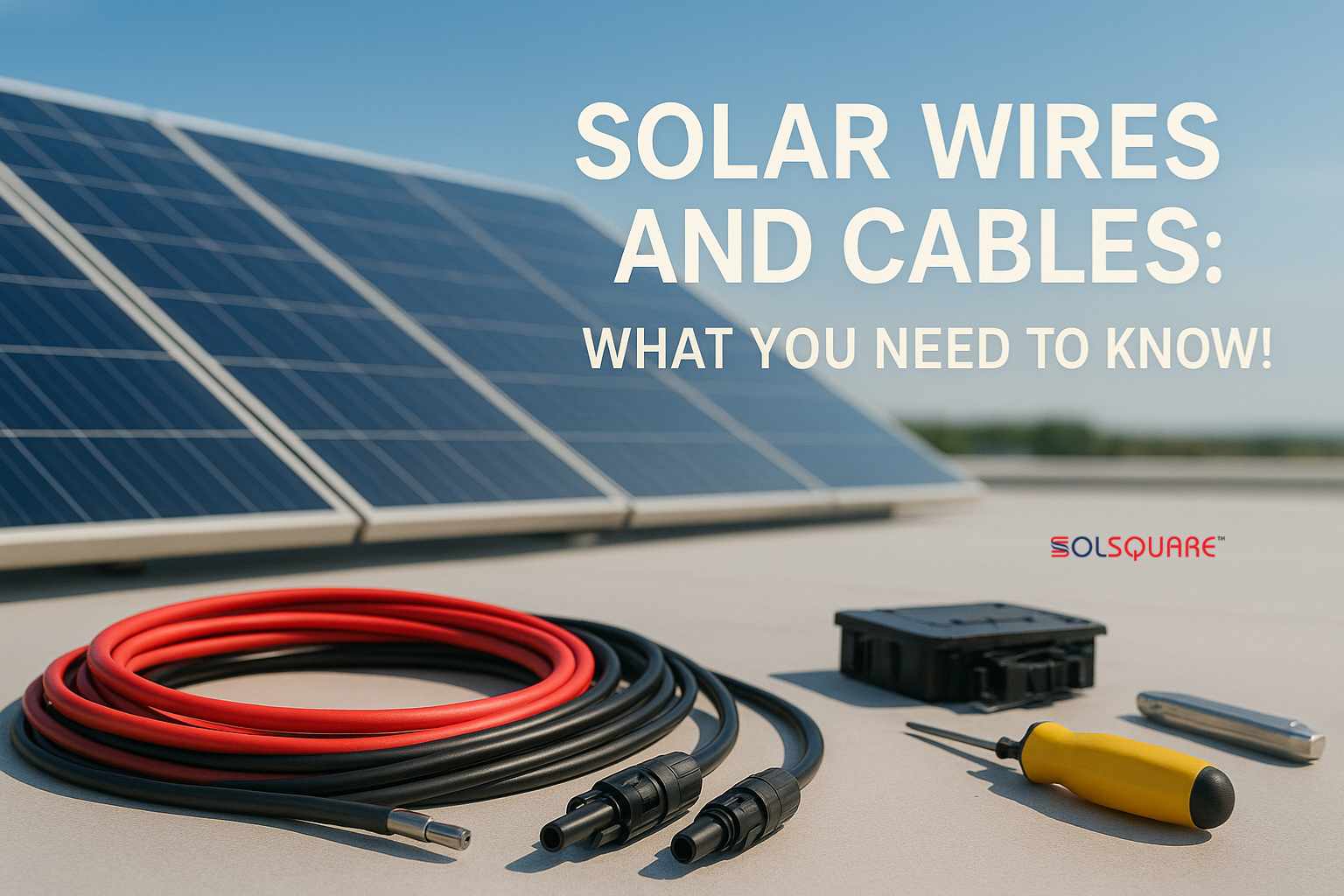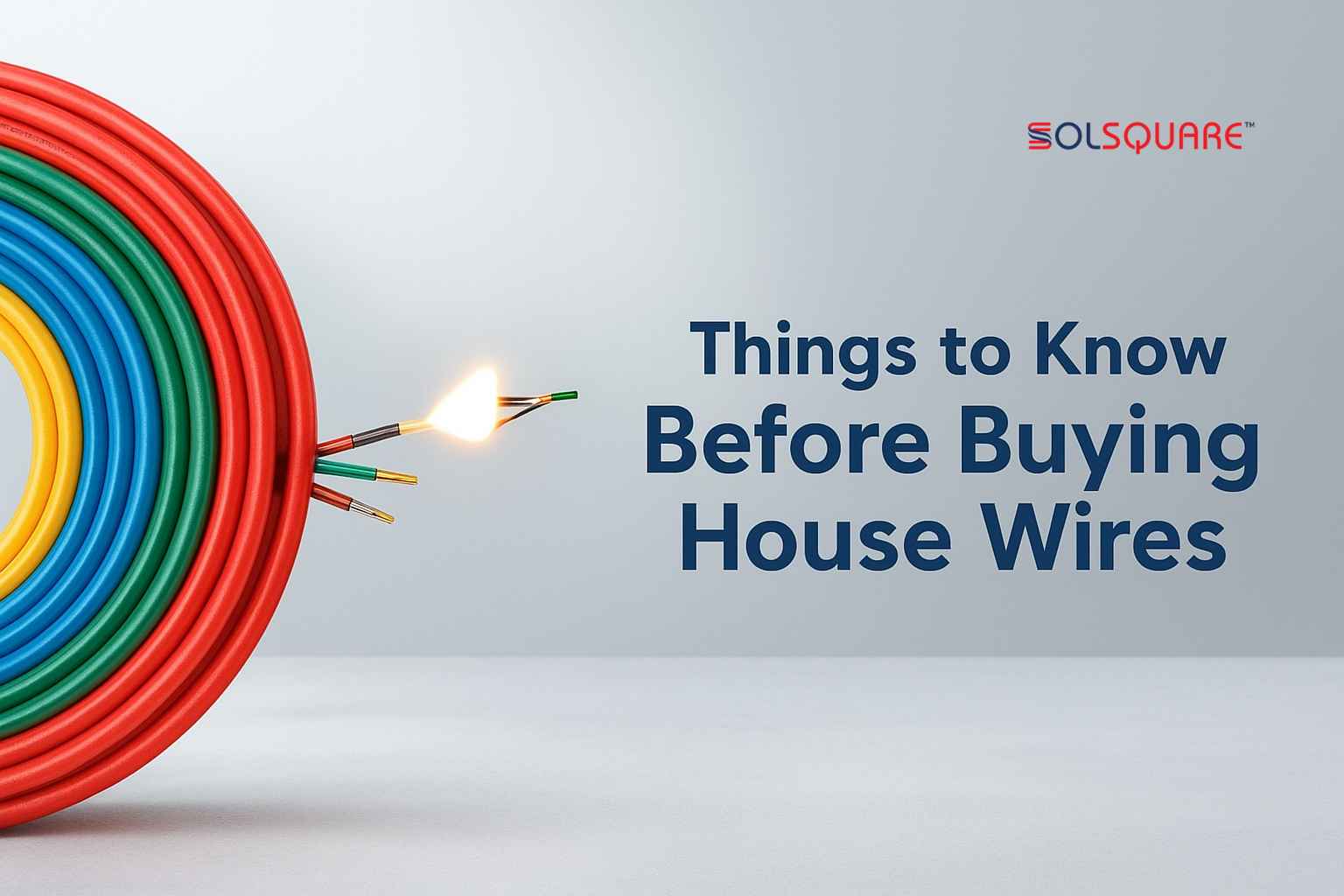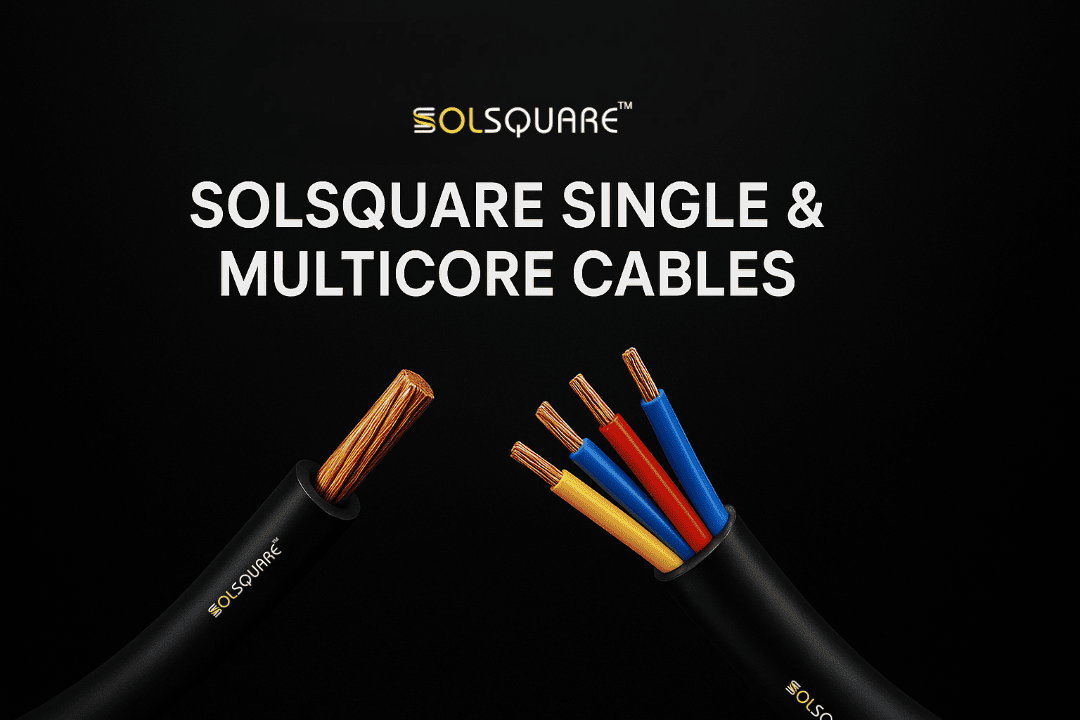5 Things to Know Before Buying House Wires
Discover the 5 key factors to consider before buying house wires-from conductor quality to insulation and safety standards for long-lasting home wiring.
Read More →Understand everything about solar wires and cables-their types, specifications, and importance for safe, efficient, and long-lasting solar power systems.

With the transformation of the global energy landscape by solar power, it is very essential to understand each and every component of the solar system. Most of the time, solar panels and inverters are in the limelight, but one element which essentially fixes the efficiency, safety, and the longevity of the solar system-solar wires and cables, is the least known.
So these wires are basically the foundations of your solar energy setup that allow the current to be moved from the panel to the inverter and then to the appliances or the grid in a hassle-free manner. Proper wires are not only essential for the flow of electricity, but also for the safety, saving of energy, and prolonging of the system's life span.
Solar wires and cables are specially designed electrical conductors that are capable of managing the challenging requirements of solar installations. Essentially, they have to work efficiently under high temperatures, UV radiation, and be exposed to the weather for a long time.
In contrast to regular electrical wires that are used indoors, solar cables have high-quality insulation, are more flexible, and have a UV-resistant outer layer. They are made to resist changing weather conditions, thus, they will still be able to perform even in extreme outdoor environments.
Almost all solar cables have tinned copper conductors for very good conductivity and resistance to corrosion. Aluminum is sometimes utilized for saving money, however, copper is still the most preferred because of its better performance.
Using regular electrical wires in a solar system can lead to severe issues, including overheating, voltage drop, and even electrical fires. Solar-specific cables are engineered to endure outdoor and high-voltage conditions for 25 years or more.
Here's why they matter:
In brief, the appropriate wiring is what keeps your solar installation safe, efficient, and stable over time.

Discover the 5 key factors to consider before buying house wires-from conductor quality to insulation and safety standards for long-lasting home wiring.
Read More →Depending on the section of the solar system, different cables are used for various functions. Here are the main types:
It is a must that you understand the specifications that affect the performance and safety of solar wires or cables before you go and purchase them.
Tinned Copper: Good conductive and resistant to corrosion - this makes it an excellent source of energy for a long time without the risk of failure.
Aluminum: It is a good conductor but lighter and economical; however, it's less conductive and must be thicker for the same result as copper.
The cross-sectional area of the wire determines how much current it can safely carry. Common PV cable sizes: 2.5mm², 4mm², 6mm², and 10mm². Wrong sizing causes voltage drops and overheating.
Choose cables matching system voltage — typically 600V, 1000V, or 1500V DC for solar systems.
Opt for cables rated for continuous use at 90°C or more, especially for rooftop installations under direct sunlight.
Always check for compliance with standards like:
Certified cables guarantee long-term performance and safety compliance.
| Function | Color | Description |
|---|---|---|
| Positive (+) DC | Red | Connects to solar panel positive terminal |
| Negative (-) DC | Black | Connects to panel negative terminal |
| Ground | Green/Yellow | Earth connection for safety |
| AC Phase | Brown | Live wire from inverter to grid |
| AC Neutral | Blue | Return current path |

Explore the applications, advantages, and benefits of Solsquare's single-core and multicore cable solutions for homes, industries, and solar setups.
Read More →Even experienced installers can make simple errors that impact system safety. Watch out for these:
Solar wires and cables are durable, but regular inspection is essential. Look for cracked or faded insulation, tighten connectors, and replace damaged cables when necessary.
Solar cables may not be the most attractive or the most talked feature of your solar power system, but without them, it would be impossible. They are the ones that seek safe, efficient, and continuous energy transfer-thus, they connect the panels, inverters, and batteries that are the three main parts of the system that you can rely on.
When you are creating your solar installation, it is essential that you do not place the cables anywhere less than. The decision on solar cables ought to be made taking into consideration if they are certified, if they are resistant to UV and atmospheric agents, and if they are compatible for use in the open air.
A small wiring quality purchase may keep your solar system safe, increase its efficiency, and prolong its life over the next 20 years.
Therefore, when you think about installing a solar system, remember that the solar panels are the ones that capture the energy, but it is the cables that deliver it.
Note: This guide is intended for informational purposes only. Always consult a certified solar installer or electrical expert for design, installation, or maintenance.